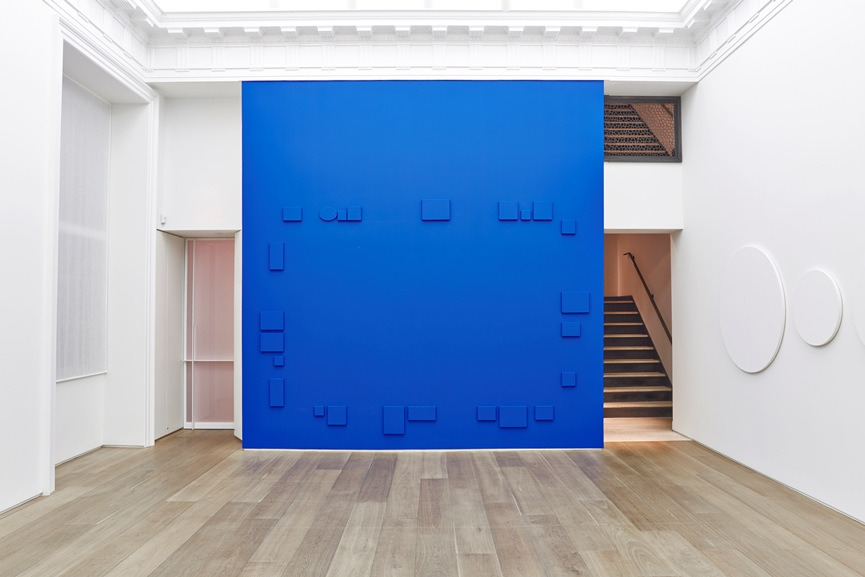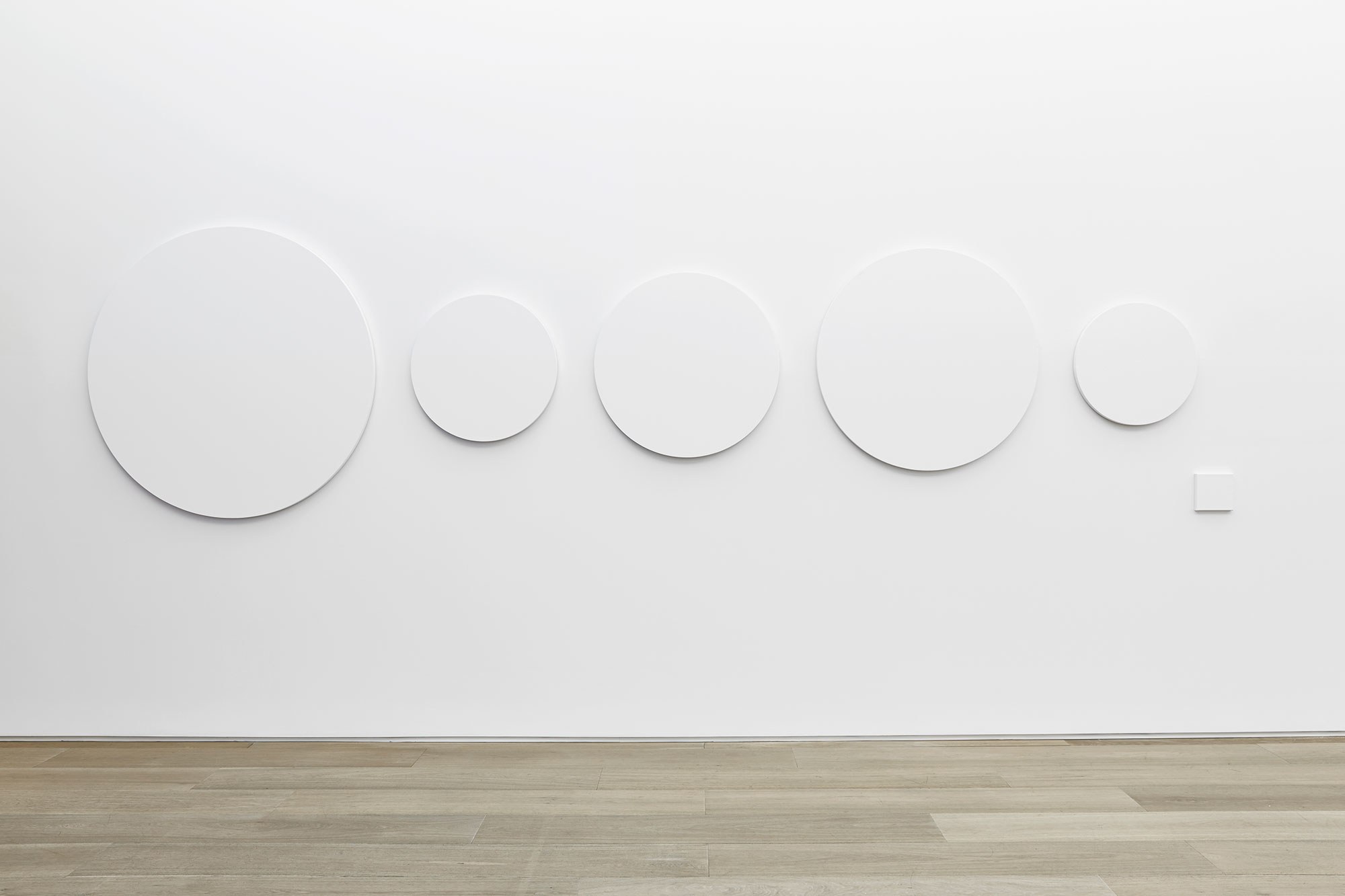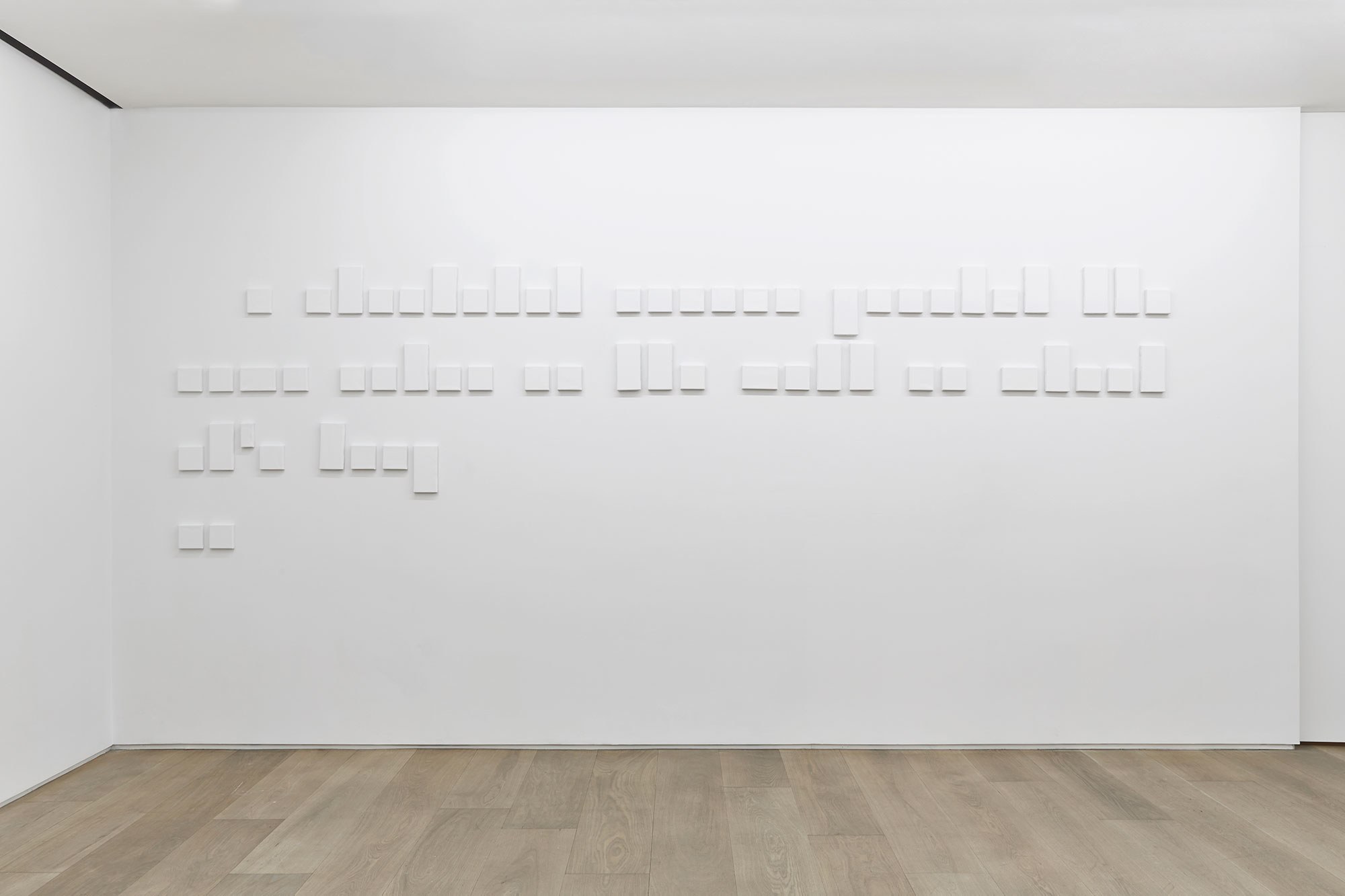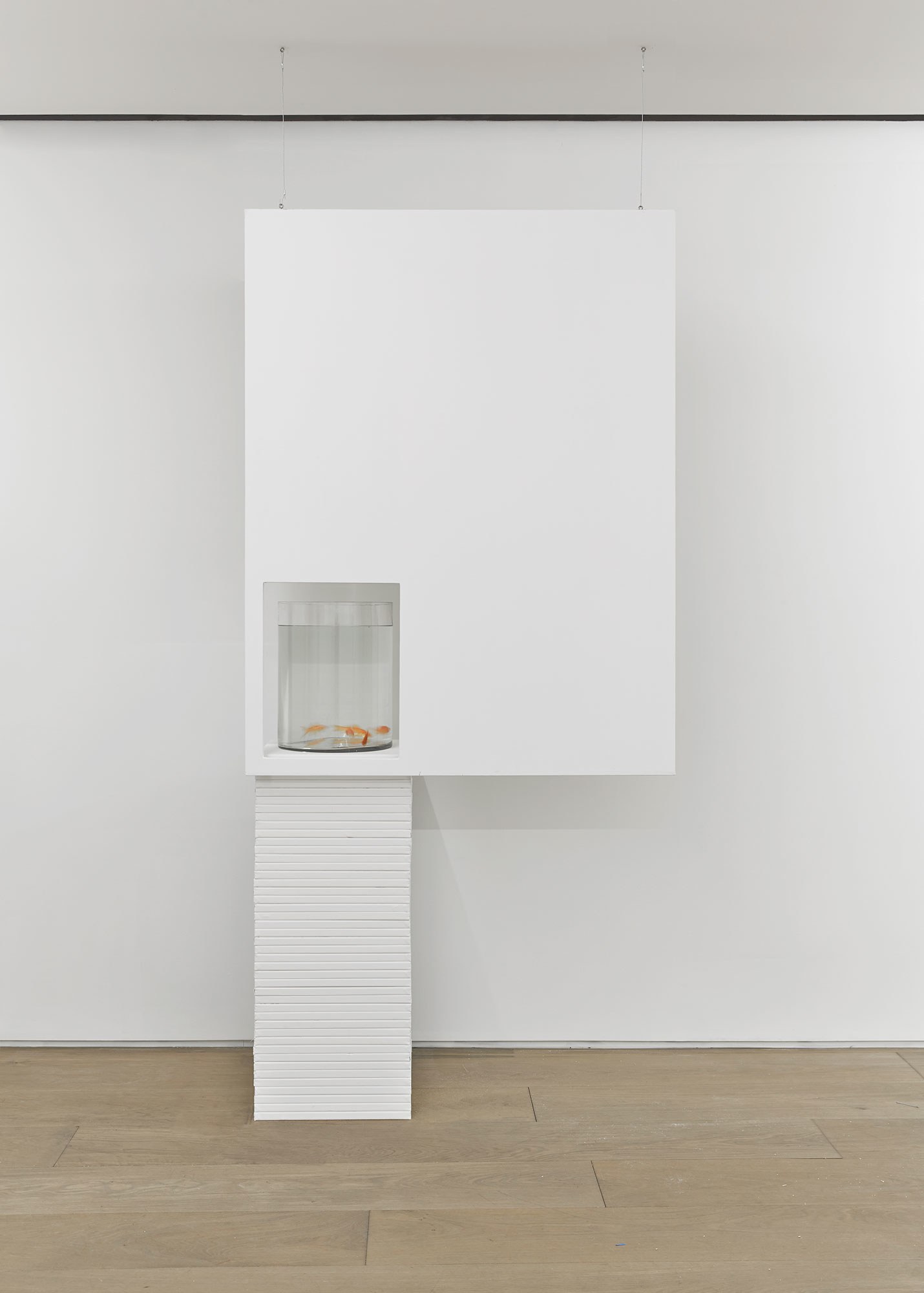|
Originally published in Interview Magazine December, 2014 |
|
 A CANVAS THE COLOR OF THE WALLBy Allan McCollumInterview done on November 29th, 2014.
At the end of November, French artist Claude Rutault came to New York for the first time in 30 years for the opening of his debut American solo exhibition at Galerie Perrotin. While Rutault considers himself a painter, he physically does not touch paint or his canvases. Rather, the artist creates a set of written instructions for a gallery, collector, or institution to follow for the implemen-tation of his work. A set of directions has become known as "de-fininition/method" and the place showing the work – referred to as the "charge-taker" – then follows the method to "actualize" the piece. This conversation was done with the help of a translator.
ALLAN MCCOLLUM: So Claude, I was very, very happy to see you. It's been maybe 30 years since I've seen you? When I was first figuring out my project the Surrogate Paintings, I read about you and got so excited because I couldn't think of anybody else who overlapped into that territory. When I met you at PS1 in 1979, I remember running over to you and talking about how much I was interested in your work and you walked away and I felt very hurt. [laughs] Then you came back and said "I'm sorry. I don't speak English." [both laugh] |
 Photo: Yachin Parham, Courtesy Galerie Perrotin |
|
|
(#GEP_Rutault_Insitu2) View of the exhibition Claude Rutault, Galerie Perrotin, New York, November 20, 2014 – January 3, 2015. "charity begins with others", 2014 paint on canvas variable dimensions according to the actualization (actualization at Galerie Perrotin: 461 x 122 cm / 181. x 47. in |
de-finition/method:
this work contains 5 round canvases ranging between 50 to 120 cm (19 1/2 to 47 1/4 inches) in diameter, with a smaller square canvas as a label. the canvases and the label are painted the same color as the wall on which they are hung. when they are hung for the first time, they are hung in a line, very close to each other. this work can be acquired by a charge-taker on the condition that he/she agrees to give three canvases to charity. the charities are free to then auction these works, if they desire so. the history of the work will begin with the first donor. the charge-taker, who will have kept two canvases, will install them on the right side of a wall, with the label, painted the same color as the wall, while a photograph of the work will be hung on the left side of the wall—a black and white photograph if the wall is a color, and a color photograph if the wall is white. the work will be photographed in the original configuration: 5 canvases and the label. |
|
MCCOLLUM: And language is very important in the way you express that. |
 Photo: Yachin Parham, Courtesy Galerie Perrotin |
|
|
View of the exhibition Claude Rutault, Galerie Perrotin, New York, November 20, 2014 – January 3, 2015. "charity begins with others", 2014 paint on canvas variable dimensions according to the actualization (actualization at Galerie Perrotin: 120 x 430 cm / 47 x 169 in |
de-finition/method:
the sentence "une toile tendue sur chČssis peinte de la même couleur que le mur sur lequel elle est accrochée" will be translated into english as "a stretched canvas painted the same color as the wall on which it's hung." lines of small square and rectangular canvases painted the same color as the wall on which they are hung spell out the sentence above. other similar lines spell out the translation into english. the elements are identical, though their number and arrangement are, obviously, different. the movement from one painting to another very similar painting - so similar that it might be mistaken for the other - is called translation. the translation of a painting can only be into the same, yet different, painting. regarded as two paintings, the two almost identical versions have become a single thing to be looked at and to be read closely. if the translation is right, both paintings say the same thing in spite of their slight differences. the painting takes place in that instant of identity and difference. the two pictorial series can be presented in various places, and they can be owned by different charge-takers. |
|
|
 Photo: Yachin Parham, Courtesy Galerie Perrotin |
|
|
(#GEP_Rutault_Insitu10) View of the exhibition Claude Rutault, Galerie Perrotin, New York, November 20, 2014 – January 3, 2015. "goldfish go painting", 2005 paint on canvas variable dimensions according to the actualization (actualization at Galerie Perrotin: 236 x 114 x 48 cm / 93 x 44. x 19 in.) Photo: Yachin Parham, Courtesy Galerie Perrotin |
de-finition/method: a canvas, about 146 x 114 cm (57 . x 44 . inches), left white or painted the same color as the wall in front of which it is hung. the charge-taker chooses the color from among those that, for him or her, evoke the work of matisse. the canvas is hung some fifty centimeters (19 inches) in front of the wall. in the lower right corner, there's a "caption" in the form of a rectangular cut-out. through this "caption-window" you can see a cylindrical fishbowl in which three to five goldfish swim. the fishbowl is placed on a stack of approximately 40 canvases set up on the floor behind the main canvas. |
|
MCCOLLUM: Well, I just want to say the show is a fantastic introduction to you and what you've done in the last 35-40 years. I'm very proud to have discussed this with you. RUTAULT: I was delighted to speak with you, especially to speak with a painter because it's become rarer and rarer; we're all so isolated. If you come to Europe, contact me and I will hopefully be able to see your show and you. Also, my proposition is still valid. |